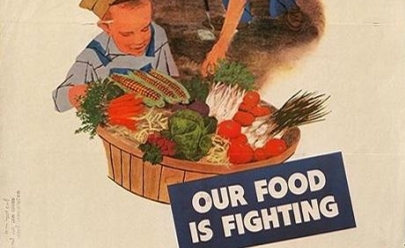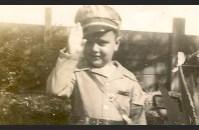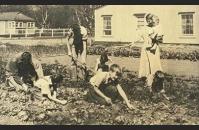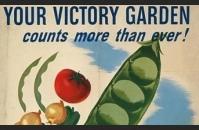VICTORY GARDENS AT A GLANCE:

Image Gallery
Fun Facts About Victory Gardens
- During World War II, Victory Gardens were planted by families in the United States (the Home Front) to help prevent a food shortage.
- In 1941, a five-foot Christmas tree could be purchased for 75 cents.
- Planting Victory Gardens helped make sure that there was enough food for our soldiers fighting around the world. Because canned vegetables were rationed, Victory Gardens also helped people stretch their ration coupons (the amount of certain foods they were allowed to buy at the store).
- Because trains and trucks had to be used to transport soldiers, vehicles, and weapons, most Americans ate local produce grown in their own communities.
- Many different types of vegetables were grown-such as tomatoes, carrots, lettuce, beets, and peas. Victory Gardens were responsible for bringing Swiss chard and kohlrabi onto the American dinner table because they were easy to grow.
- At their peak there were more than 20,000,000 Victory Gardens planted across the United States.
- By 1944 Victory Gardens were responsible for producing 40% of all vegetables grown in the United States. More than one million tons of vegetables were grown in Victory Gardens during the war.
- People with no yards planted small Victory Gardens in window boxes and watered them through their windows. Some city dwellers who lived in tall apartment buildings planted rooftop gardens and the whole building pitched in and helped.
- Many schools across the country planted Victory Gardens on their school grounds and used their produce in their school lunches.
- The U.S. government printed recipe books describing how to prepare home grown vegetables to make nutritional and tasty meals. Agricultural companies gave tips on how to make seedlings flourish in different climates.
- Excess food grown in Victory Gardens was canned and used during the winter months to help supplement the amount of food available.
- Growing Victory Gardens gave Americans on the Home Front a feeling that they were doing something helpful to win the war (and they were)!
Download a printable version of this At A Glance
Download a set of Victory Garden propaganda posters
Visit the Museum's Classroom Victory Garden project!
TAKE ACTION:


EDUCATION PROJECTS:
Student Travel – WWII Educational Tours
High school and college students, learn the leadership principles that helped win WWII on a trip to France or during a weeklong residential program in New Orleans. College credit is available, and space is limited.
See You Next Year! HS Yearbooks from WWII
Collected from across the United States, the words and pictures of these yearbooks present a new opportunity to experience the many challenges, setbacks and triumphs of the war through the eyes of America’s youth.
The Victory Gardens of WWII
Visit the Classroom Victory Garden Project website to learn about food production during WWII, find lesson plans and activities for elementary students, get tips for starting your own garden and try out simple Victory Garden recipes!
The Science and Technology of WWII
Visit our new interactive website to learn about wartime technical and scientific advances that forever changed our world. Incorporates STEM principles to use in the classroom.
Kids Corner: Fun and Games!
Make your own propaganda posters, test your memory, solve puzzles and more! Learn about World War II and have fun at the same time.






